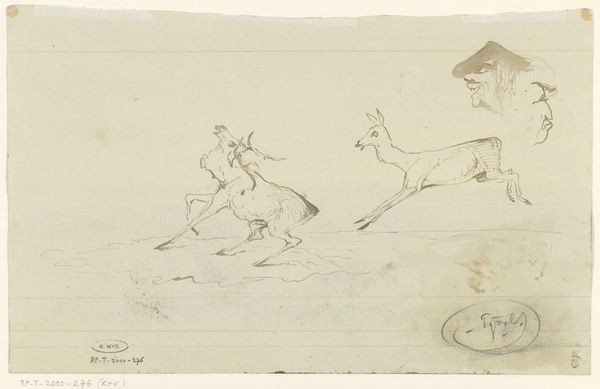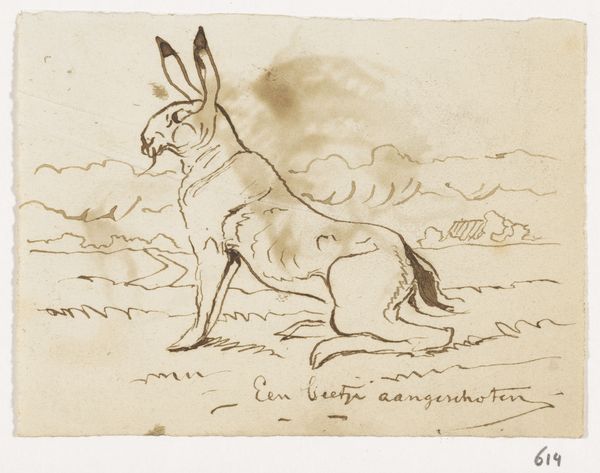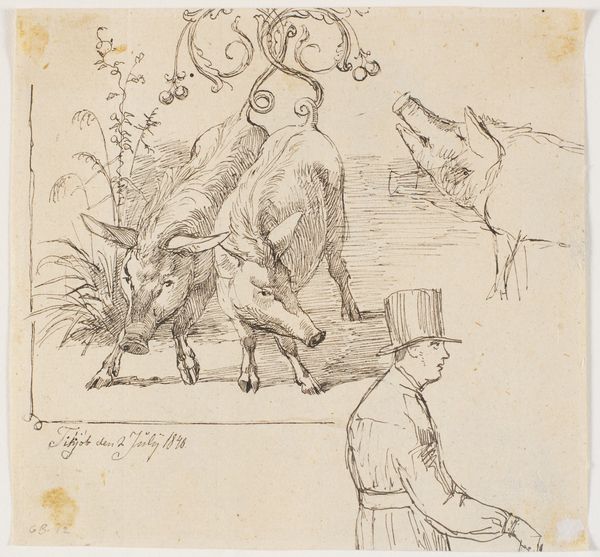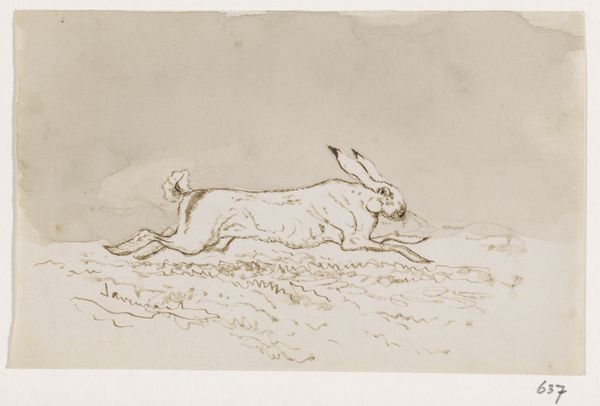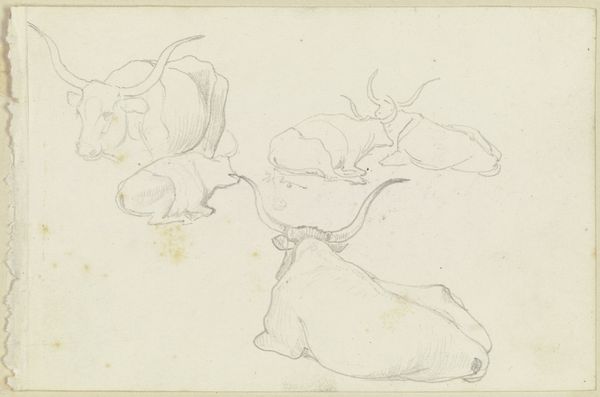
Liggende æsel, der piskes og sparkes af en fører. T.h. to studier af et liggende og et stående æsel 1845
drawing, pencil
drawing
landscape
figuration
pencil
Dimensions: 204 mm (height) x 272 mm (width) (bladmaal)
Curator: There’s an almost dreamlike quality to Johan Thomas Lundbye’s pencil drawing, created in 1845. It's titled "Liggende æsel, der piskes og sparkes af en fører. T.h. to studier af et liggende og et stående æsel"—which translates to "Lying donkey, whipped and kicked by a leader. To the right, two studies of a lying and a standing donkey." I think it resonates with melancholy, and I wonder about its place within the Danish Golden Age. Editor: It feels like an uncomfortable glimpse into a world of toil. The donkey is a recurring image, so what can the repeated figure tell us? And is this just animal cruelty or can we read between the lines? Curator: Well, Lundbye often found himself drawn to the plight of animals and, from the artist’s personal perspective, the drawing could simply represent that concern. Look how delicately the animals are drawn—with very tender outlines that soften an otherwise tough scene. Editor: Perhaps. Yet consider that 1845 in Denmark was a time of increasing national sentiment and calls for agrarian reform. Donkeys were, and often still are, the workforce that builds society but are never treated as more than a beast of burden. There's an inherent inequality on display that echoes socio-political tensions in Denmark. Who holds the whip and who feels it? Curator: You are right. But look at the leader's depiction – a loose sketch – is he even malicious? I get the sense of a necessary chore rather than outright brutality, or a general ignorance and blindness to the creature’s plight. Is it malicious, or just mundane? The donkey seems like an empty symbol, just an empty tool. Editor: The ambiguity could be precisely the point. The everyday normalisation of exploitation underpins systemic issues, and a nation struggling with its identity mirrors it! Whether intentional or not, Lundbye captures a broader dynamic. This small pencil drawing on blue paper becomes a window into that struggle. Curator: Absolutely! The drawing seems simple, almost like a doodle. The donkey embodies multiple possibilities when viewed as part of its historical context. It definitely deepens my understanding and feelings for this sketch, from simple, everyday drudgery to historical complexity. Editor: Mine too. Considering art as activism, that is, an act of standing against the tide of oppression and indifference gives me hope. Art invites people to reflect on the everyday conditions in order to act in accordance with solidarity, even when it seems almost futile.
Comments
No comments
Be the first to comment and join the conversation on the ultimate creative platform.
